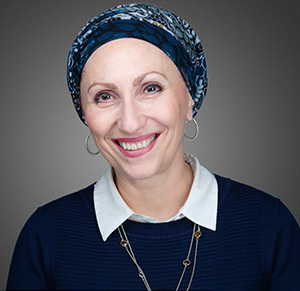Mishpacha’s Vision Goes Braille


What started as a computer program to help his blind friend became Rabbi Nachum Lehman’s groundbreaking organization. With the Braille magazine “we realized we’d stumbled on an awesome way to help our clients once again” Photos by Amir Levy
W
ith Shabbos ending well past 9 p.m. in the summer there’s a long afternoon to fill — and as the People of the Book many of us are happy to have the extra time to curl up on the couch with some good reading material. But what about the visually impaired? During the week they can now read or listen to just about anything off a computer with the help of special refreshable Braille displays (a sort of keyboard connected to the computer with hundreds of tiny pins that rise and fall as they convert text from the screen into Braille letters) or audio programs. On Shabbos however the computers and those books and tapes are shut off.
“For years we’ve had a void of reading material for Shabbos despite the books we print” says Rabbi Nachum Lehman creator and director of Computer Sciences for the Blind (CSB Care) which prints seforim (including some ArtScroll and Feldheim titles) in Braille. CSB Care has also created custom-designed audio Torah software allowing access to an entire library of seforim for the visually impaired. “We have hundreds of volumes of learning material for men and boys but for the women it’s harder because they’re not learning Gemara. But even the men can’t learn nonstop; they need some relaxing reading material as well.”
All this has just changed though with the introduction of a breakthrough Braille edition of Mishpacha. We at the magazine are so excited about this new venture that we just had to share some of the background with you.
Family Reading
Rabbi Lehman is always on the lookout for new state-of-the-art ways to help his clients and about eight months ago a generous supporter from Boro Park asked if there was anything CSB Care needed to enhance the lives of its blind clientele. Lehman replied that he needed new Braille display devices which cost upward of $3000 apiece. The donor purchased 50 of them resolving the problem with a wave of the checkbook. A few months later the donor asked again: “What else can I do to help your clients?”
Rabbi Lehman hesitated. “Well we really need a new Braille embossing machine. We’re sending out hundreds of Braille seforim every year and we keep having problems with our current Braille embosser. But those machines are expensive — around $16000.”
“Good. Buy it l’zecher nishmas a family member” he replied immediately.
Lehman bought a new model that was much larger and more efficient than the previous machine they’d been using.

CSB’s Braille version of Rabbi Yechiel Spero’s Touched by a Story is just one of many books that has opened a new vista for vision-impaired children
“When I saw the specs of the machine I saw it could print an 11 x 17 magazine format which is perfect for a Braille magazine” Rabbi Lehman says. “Furthermore a magazine only has to be folded and stapled not bound like a book so it would be easier for us to produce. That’s when we realized we had stumbled upon an awesome way to help our clients once again.”
He contacted his cousin Mishpacha columnist Rabbi Avrohom Neuberger and suggested that perhaps he could approach Mishpacha for permission to print the magazine in Braille. The response was swift and enthusiastic. “Some things transcend business” says Mishpacha CEO Avi Lazar. “As the word spread around the employees the reaction was amazing.”
Oops! We could not locate your form.







